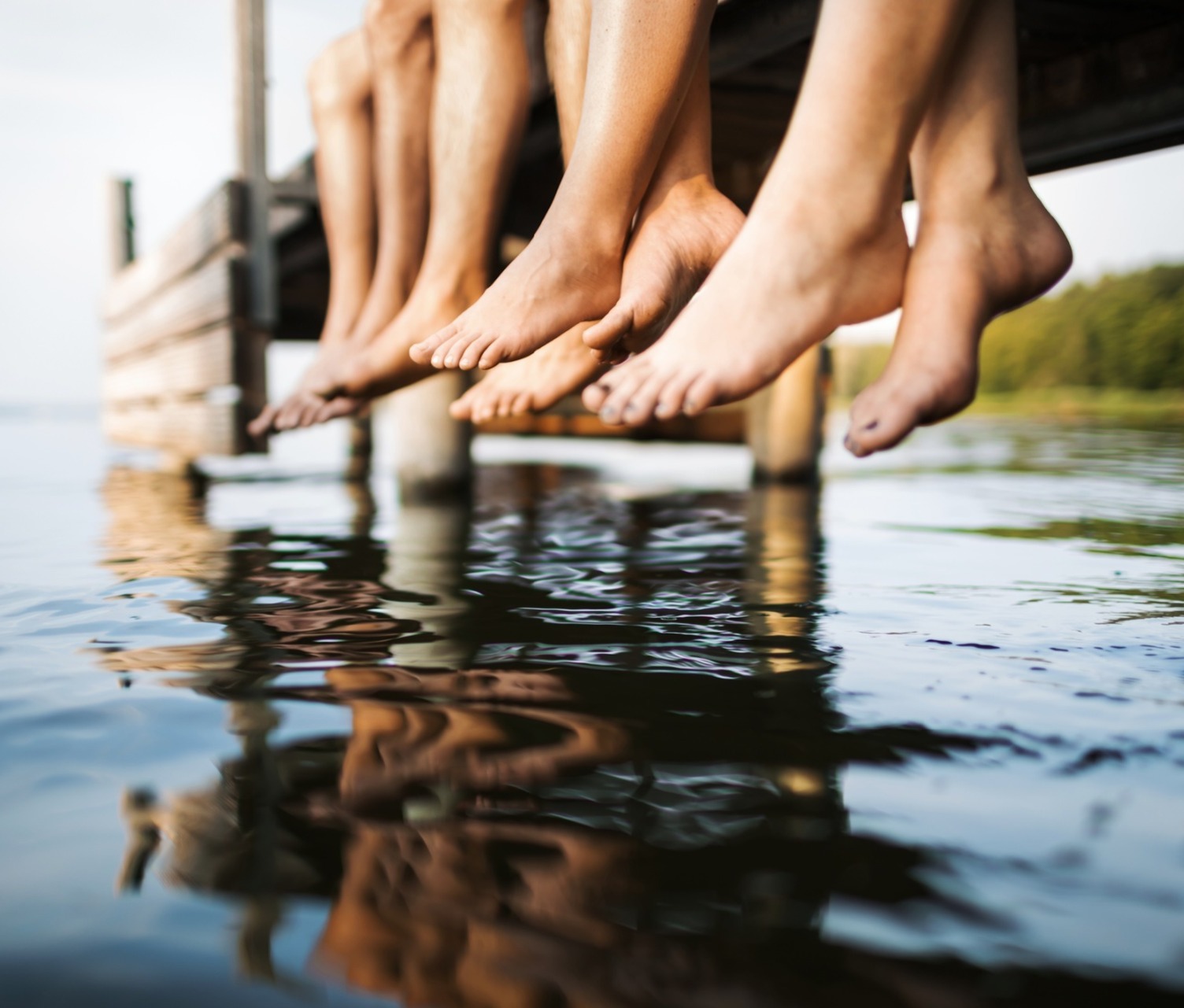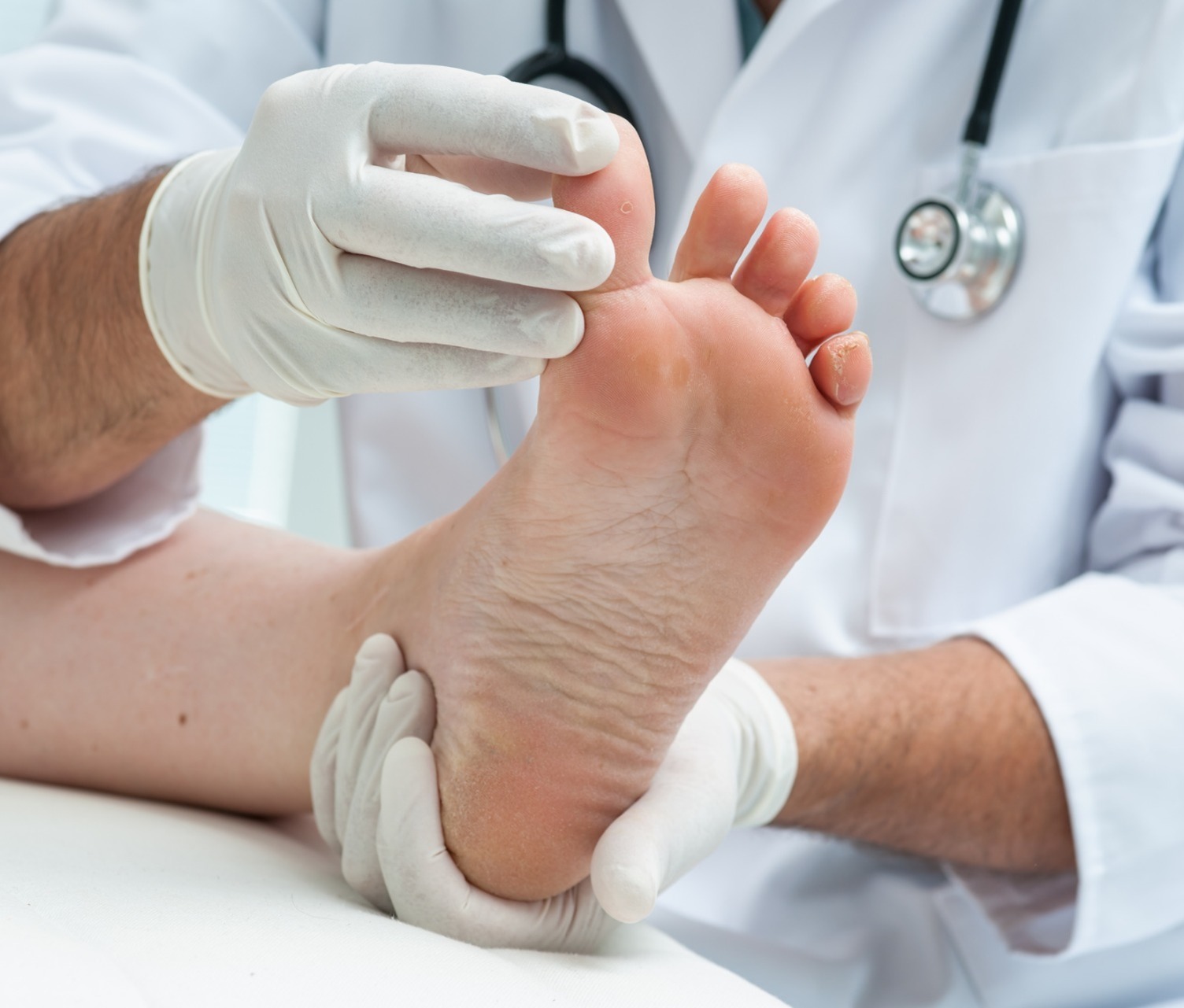Common Foot Problems
Your feet take the whole weight of your body, so it's important to take good care of them. Our list of Common Foot Problems helps highlight the issues and the way in which you can take care of your feet
Athlete's Foot
What is athlete’s foot?
Athlete’s foot is a fungal infection of the skin that can lead to intense itching, cracked, blistered or peeling areas of skin, redness and scaling. It can occur on moist, waterlogged skin, usually between the fourth and fifth toes initially, or on dry, flaky skin around the heels or elsewhere on the foot.
Large painful fissures can also develop and the condition can also spread along all five toes and sometimes to the soles of the feet if left untreated.
What causes it?
It is caused by a number of fungal species that you can pick up from someone else shedding affected skin (typically in communal areas such as pools, showers and changing rooms) or where you may walk around barefoot. Athlete’s foot can also be passed on directly from person to person contact, although people who sweat more are more prone to infection.
Once your feet have been contaminated, the warm, dark and sweaty environment of feet in shoes or trainers provides the ideal breeding ground for the fungus. However, athlete’s foot also occurs in dry, flaky areas. It’s quite common in summer with sandal wearers. The sun makes your skin dry out so it loses its natural protective oils. This combined with the constant trauma from sandals makes your feet more prone to infection.
Who gets it?
It’s not called athlete’s foot for nothing! Walking barefoot around swimming pools and spending your life in trainers may make you more likely to pick it up, but you do not need to be an athlete to get this condition.
Is it serious?
If left untreated, the fungus can spread to the toe nails, causing thickening and yellowing of the nail, which is much harder to treat. Fungal infections are highly contagious and can spread to anywhere on your skin – including your scalp, hands and even your groin. This is especially likely if you use the same towel for your feet as for the rest of your body. It is always best to treat this condition as soon as symptoms are first noticed.
What are the treatments?
Treatments depend on what type of athlete’s foot you have. Over-the-counter remedies are always a good starting point, and your GP or podiatrist can also recommend suitable treatments.
For athlete’s foot where the skin conditions are dry: if the condition occurs on a dry area such as your heel, you need to restore moisture by rubbing in an anti-fungal cream or spray, sometimes combined with a steroid cream (all from your pharmacist). You must remember to wash your hands thoroughly afterwards, or use disposable gloves so you don’t get the fungus on your hands.
For athlete’s foot where the skin conditions are moist: this requires a different treatment. Wash your feet in water as cold as you can bear (hot water only makes your feet fungus-friendly) then dry them thoroughly after washing, preferably with a separate towel or even kitchen roll. It is important to dab your feet dry rather than rub them, as rubbing tends to take away any healing skin. Although the skin may appear flaky and dry, never use moisturiser between your toes, and avoid powders as they can cake up and irritate skin. A spirit-based preparation such as surgical spirit can help (it’s cooling, soothing and antiseptic). This may sting a little but will evaporate the moisture and allow the skin to heal. Only use on unbroken skin.
In severe cases, an anti-fungal tablet may be prescribed. However, tablets are not suitable for everyone, for example pregnant women, so always check with your pharmacist and follow the instructions carefully.
You should also avoid using anti-fungal powders between the toes, although they’re good for dusting inside shoes and trainers.
The mistake most people make is to stop their hygiene regime, shoe rotation and/or medication once their symptoms have gone. Although symptoms may disappear after several days or weeks of treatment, the fungus can lie dormant and could eventually reappear in the right environment. Some products require continued treatment for many weeks – always follow the instructions. Also, be alert to symptoms so that you can deal with any problems straight away.
Fungal nails. Prescribed oral medications from your GP or podiatrist can be used for fungal nails. These usually takes between three and six months to get rid of the infection but can take longer. Alternatively, over-the-counter remedies such as anti-fungal nail lacquer can be used. These can take up to a year or more to work as it takes this long for a nail to grow out fully.
FUNGAL INFECTIONS
Athlete's foot
Athlete's foot (tinea pedis) is a fungal infection that usually begins between the toes. It commonly occurs in people whose feet have become very sweaty while confined within tight fitting shoes. Signs and symptoms of athlete's foot include a scaly rash that usually causes itching, stinging and burning. Athlete's foot is contagious and can be spread via contaminated floors, towels or clothing.
Athlete's foot is closely related to other fungal infections such as ringworm and jock itch. It can be treated with over-the-counter antifungal medications, but the infection often recurs. Prescription medications also are available.
Symptoms
Athlete's foot usually causes a scaly red rash. The rash typically begins in between the toes. Itching is often the worst right after you take off your shoes and socks. Some types of athlete's foot feature blisters or ulcers. The moccasin variety of athlete's foot causes chronic dryness and scaling on the soles that extends up the side of the foot. It can be mistaken for eczema or dry skin.
The infection can affect one or both feet and can spread to your hand — especially if you scratch or pick at the infected parts of your feet.


Causes
Athlete's foot is caused by the same type of fungus that causes ringworm and jock itch. Damp socks and shoes and warm, humid conditions favor the organism's growth. Athlete's foot is contagious and can be spread by contact with an infected person or from contact with contaminated surfaces, such as towels, floors and shoes.
Risk factors
You are at higher risk of athlete's foot if you:
Are a man
Frequently wear damp socks or tight-fitting shoes
Share mats, rugs, bed linens, clothes or shoes with someone who has a fungal infection
Walk barefoot in public areas where the infection can spread, such as locker rooms, saunas, swimming pools, communal baths and showers
Complications
Your athlete's foot infection can spread to other parts of your body, including:
Your hand. People who scratch or pick at the infected parts of their feet may develop a similar infection in one of their hands.
Your nails. The fungi associated with athlete's foot can also infect your toenails, a location that tends to be more resistant to treatment.
Your groin. Jock itch is often caused by the same fungus that results in athlete's foot. It's common for the infection to spread from the feet to the groin as the fungus can travel on your hands or on a towel.
Prevention
These tips can help you avoid athlete's foot or ease the symptoms if infection occurs:
Keep your feet dry, especially between your toes. Go barefoot to let your feet air out as much as possible when you're at home. Dry between your toes after a bath or shower.
Change socks regularly. If your feet get very sweaty, change your socks twice a day.
Wear light, well-ventilated shoes. Avoid shoes made of synthetic material, such as vinyl or rubber.
Alternate pairs of shoes. Don't wear the same pair every day so that you give your shoes time to dry after each use.
Protect your feet in public places. Wear waterproof sandals or shoes around public pools, showers and lockers rooms.
Treat your feet. Use powder, preferably antifungal, on your feet daily.
Don't share shoes. Sharing risks spreading a fungal infection.
HOW YOU CAN PREVENT ATHLETE'S FOOT YOURSELF

DO...
dry your feet after washing them, particularly between your toes – dab them dry rather than rubbing them
use a separate towel for your feet and wash it regularly
take your shoes off when at home
wear clean socks every day – cotton socks are best

DON'T...
do not scratch affected skin – this can spread it to other parts of your body
do not walk around barefoot – wear flip-flops in places like changing rooms and showers
do not share towels, socks or shoes with other people
do not wear the same pair of shoes for more than 2 days in a row
do not wear shoes that make your feet hot and sweaty





